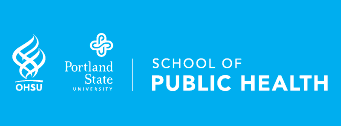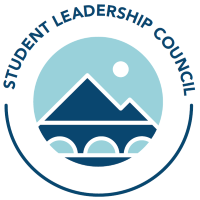Estimated proportion of child maltreatment allegations attributable to pre-birth maternal household challenges
Presenter Biography
Abigail is a doctoral candidate in the Department of Epidemiology. Her dissertation research focuses on factors that are associated with involvement in the Oregon child welfare system.
Program/Major
Epidemiology
Student Level
PhD
Presentation Type
Presentation
Start Date
4-4-2023 12:15 PM
End Date
4-4-2023 12:30 PM
Creative Commons License or Rights Statement
IN COPYRIGHT:
© Copyright the author(s)
https://rightsstatements.org/vocab/InC/1.0/
This Item is protected by copyright and/or related rights. You are free to use this Item in any way that is permitted by the copyright and related rights legislation that applies to your use. For other uses you need to obtain permission from the rights-holder(s).
Persistent Identifier
https://archives.pdx.edu/ds/psu/40226
Subjects
PRAMS, child maltreatment, population attributable fraction, household challenges
Abstract
Introduction: Maternal household challenges (HC) such as substance abuse, mental illness, interpersonal violence, and housing instability are positively related to offspring involvement with the child welfare system. Our objective was to estimate the proportion of child maltreatment allegation incidence attributable to numbers of pre-birth HCs experienced.
Methods: We used data from the Oregon Longitudinal Child Abuse and Neglect Linkage, a population-representative cohort linking 2009 – 2011 Pregnancy Risk Assessment Monitoring System (PRAMS) data with child protective service records. Counts of the 12 pre-birth HC from the PRAMS survey were summed and categorized as 0-1, 2-3 or 4-12 HC. Children of PRAMS respondents were followed for first maltreatment allegation from birth through age 7 years. We used logistic regression with survey weights (w) to estimate the population attributable fractions (PAF) and corresponding 95% confidence intervals (CI) for individual HCs, 2-3, and 4-12 HCs, adjusted for maternal sociodemographic factors. PAF represents the potential reduction in incidence of child maltreatment allegations.
Results: Among the 5,144 PRAMS respondents, 2,130 (53.3%w) experienced 0-1 HC, 1,240 (30.1%w) experienced 2-3, and 704 (16.6%w) experienced 4-12. By age 7, 1,480 (25.4%w) children had a maltreatment allegation. The PAF of 2-3 HC on maltreatment allegations was 13.2% (95%CI 5.5, 20.9) and 4-12 HCs was 25.1% (95%CI 18.4, 31.8).
Conclusions: Eliminating 4-12 pre-birth HCs could reduce future maltreatment allegations for children born into those households by 25%. Supporting families during the pre-birth period by identifying and focusing on primary prevention of HCs may substantially reduce future maltreatment allegations among offspring.
Estimated proportion of child maltreatment allegations attributable to pre-birth maternal household challenges
Introduction: Maternal household challenges (HC) such as substance abuse, mental illness, interpersonal violence, and housing instability are positively related to offspring involvement with the child welfare system. Our objective was to estimate the proportion of child maltreatment allegation incidence attributable to numbers of pre-birth HCs experienced.
Methods: We used data from the Oregon Longitudinal Child Abuse and Neglect Linkage, a population-representative cohort linking 2009 – 2011 Pregnancy Risk Assessment Monitoring System (PRAMS) data with child protective service records. Counts of the 12 pre-birth HC from the PRAMS survey were summed and categorized as 0-1, 2-3 or 4-12 HC. Children of PRAMS respondents were followed for first maltreatment allegation from birth through age 7 years. We used logistic regression with survey weights (w) to estimate the population attributable fractions (PAF) and corresponding 95% confidence intervals (CI) for individual HCs, 2-3, and 4-12 HCs, adjusted for maternal sociodemographic factors. PAF represents the potential reduction in incidence of child maltreatment allegations.
Results: Among the 5,144 PRAMS respondents, 2,130 (53.3%w) experienced 0-1 HC, 1,240 (30.1%w) experienced 2-3, and 704 (16.6%w) experienced 4-12. By age 7, 1,480 (25.4%w) children had a maltreatment allegation. The PAF of 2-3 HC on maltreatment allegations was 13.2% (95%CI 5.5, 20.9) and 4-12 HCs was 25.1% (95%CI 18.4, 31.8).
Conclusions: Eliminating 4-12 pre-birth HCs could reduce future maltreatment allegations for children born into those households by 25%. Supporting families during the pre-birth period by identifying and focusing on primary prevention of HCs may substantially reduce future maltreatment allegations among offspring.


